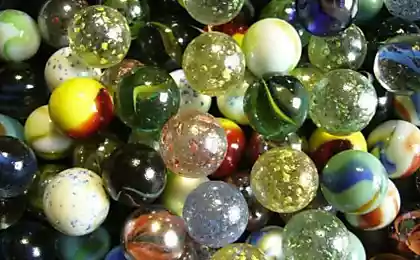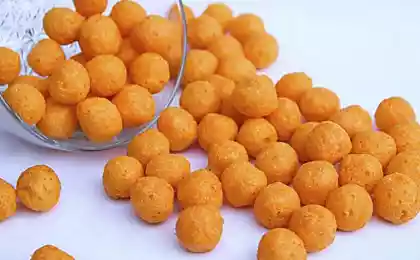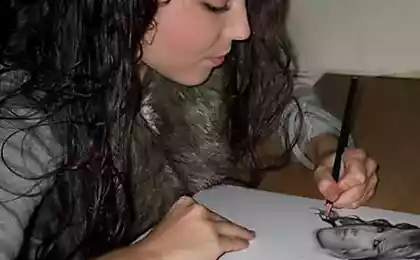678
Glass colored balls
Shum: popular topics in mind it was decided to rescue it from the bayan by replacing the picture in the first post and the unification of all posts on this topic.
Remember the beads of colored glass with a diameter of about two centimeters?
The most valuable are the blue, green and brown balls. In the fall of the balls are not broken, they are only split off pieces.
One of the main advantages of balls was a mystery of their origin. The beads ever found or received as a gift. There were several versions of the "official" destination and origin balls:
1. The ball is in aerosol containers, where craftsmen have been removed;
2. Balls are a way of transportation of glass containers, in particular for rail transport.
Glass beads were children's currency in exchange relations. They are also worn as talismans, and, of course, used for games.
We used glass beads and adults: the Research Institute of Chemical orientation (to displace the air from the tube), for interior decoration (balls "soldered" to the wall), to decorate aquariums.
Appointment balls remained a mystery to me until 1999.

All in place of field practice with a visit to the Novopolotsk plant for the production of fiberglass.
Glass beads - a spherical molded articles made by cooking quartz sand, fluorspar, limestone, alumina, boric acid, etc. In a glass melting furnace at a high temperature.
Glass beads are manufactured with a diameter of 22 ± 1 mm. They contain boron oxide (B2O3), weight percentage of not less than 7%.
On physical and chemical properties of glass beads are non-toxic, explosive, flammable. These characteristics allow the neutral is widely used glass beads.
Glass balls are semi-finished raw material to produce glass for various purposes, production of woven and nonwoven fibers. Also, the glass beads are used for the dispersion of solids and liquids (especially often in the bead mill).
As packaging for glass beads used soft containers Big-Bag, designed for the transport and storage of bulk cargoes.
That's all, childhood is over.

Source:
Remember the beads of colored glass with a diameter of about two centimeters?
The most valuable are the blue, green and brown balls. In the fall of the balls are not broken, they are only split off pieces.
One of the main advantages of balls was a mystery of their origin. The beads ever found or received as a gift. There were several versions of the "official" destination and origin balls:
1. The ball is in aerosol containers, where craftsmen have been removed;
2. Balls are a way of transportation of glass containers, in particular for rail transport.
Glass beads were children's currency in exchange relations. They are also worn as talismans, and, of course, used for games.
We used glass beads and adults: the Research Institute of Chemical orientation (to displace the air from the tube), for interior decoration (balls "soldered" to the wall), to decorate aquariums.
Appointment balls remained a mystery to me until 1999.

All in place of field practice with a visit to the Novopolotsk plant for the production of fiberglass.
Glass beads - a spherical molded articles made by cooking quartz sand, fluorspar, limestone, alumina, boric acid, etc. In a glass melting furnace at a high temperature.
Glass beads are manufactured with a diameter of 22 ± 1 mm. They contain boron oxide (B2O3), weight percentage of not less than 7%.
On physical and chemical properties of glass beads are non-toxic, explosive, flammable. These characteristics allow the neutral is widely used glass beads.
Glass balls are semi-finished raw material to produce glass for various purposes, production of woven and nonwoven fibers. Also, the glass beads are used for the dispersion of solids and liquids (especially often in the bead mill).
As packaging for glass beads used soft containers Big-Bag, designed for the transport and storage of bulk cargoes.
That's all, childhood is over.

Source:























